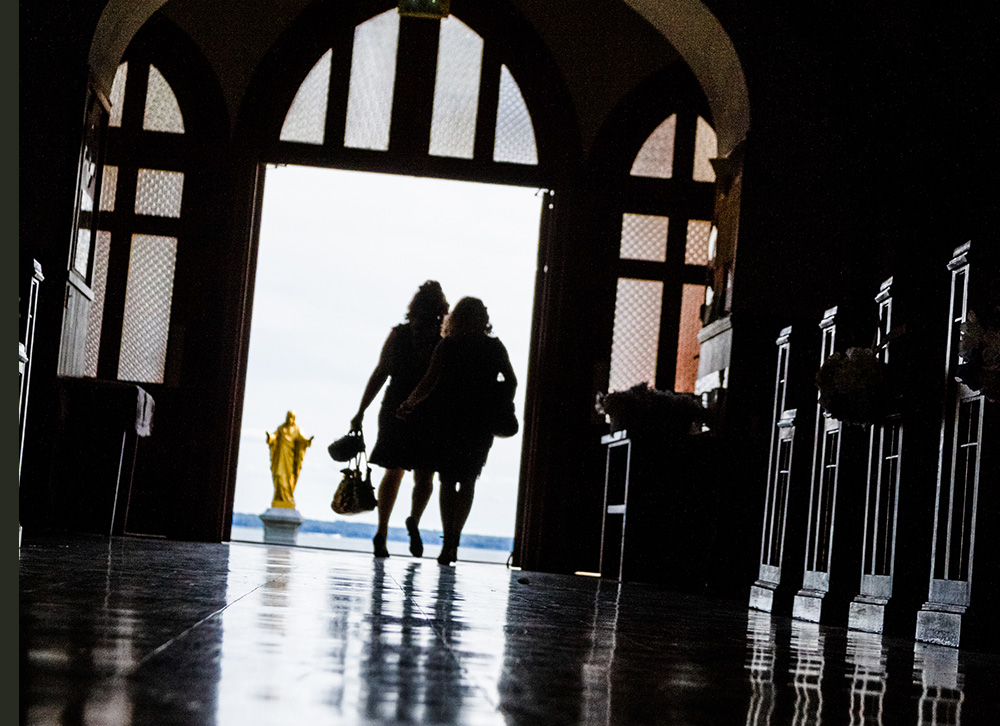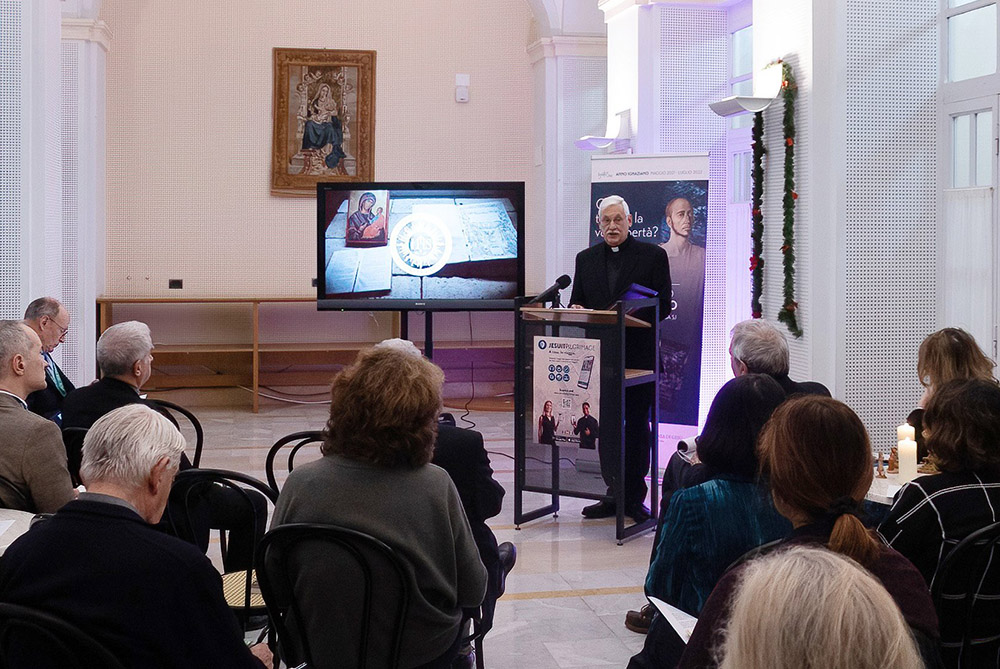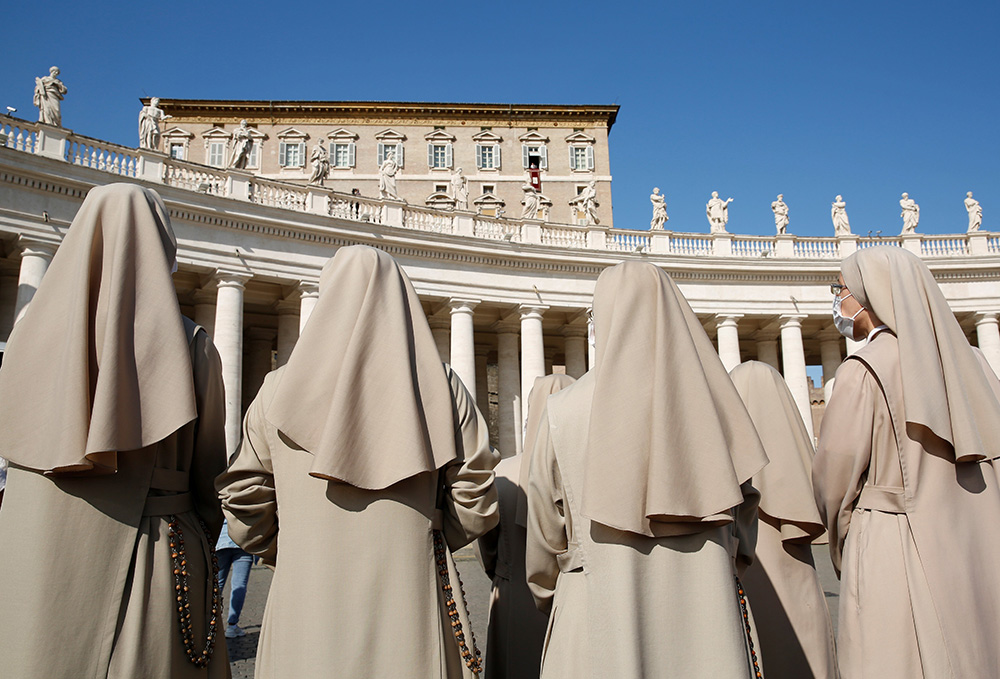
(Dreamstime/Benoit Daoust)
The global Jesuit order issued a notice in early December that it had placed restrictions on the ministry of Jesuit Fr. Marko Rupnik, an internationally known religious artist, after accusations he had abused several adult women. While remaining deliberately vague about the reasons for the move, the Jesuits seemed keen to stress that "no minors were involved."
While the Jesuits and the Vatican's Dicastery for the Doctrine of the Faith avoided further comments on the case, some Italian blogs reported that Rupnik, a charismatic star in certain circles, had been accused of spiritually and sexually abusing consecrated women of the Loyola Community, a religious community he had co-founded in Slovenia in the early 1980s.
Only at a press conference with journalists later in mid-December did the Jesuit superior general, Fr. Arturo Sosa, confirm rumors that Rupnik had been excommunicated in 2019 as a result of an offense called "absolutio complicis." Specifically, Sosa said Rupnik had absolved a woman in confession of having engaged in sexual activity with him.

Fr. Arturo Sosa, superior general of the Jesuits, meeting reporters at the Jesuit headquarters in Rome Dec. 14, 2022, discusses the case of Fr. Marko Rupnik, a Jesuit artist who is under ministry restrictions after abuse allegations. (CNS/Jesuit Communications Office)
Yet Sosa's comments sounded as if he wanted to downplay the fact.
"So he was excommunicated. How do you lift an excommunication? The person has to recognize it and has to repent, which he did," said the Jesuit general.
Then, some days before Christmas, the Italian newspaper Domani released an interview with a woman who identified herself as one of Rupnik's victims. Calling herself Anna, a pseudonym, she described in detail the abuse she suffered.
Anna said it started with apparently harmless encounters and conversations with Rupnik, who had become her spiritual director when she was a 21-year-old medical student visiting him in his studio in Rome. She recalled how he would show her images from the Kama Sutra, ask her to pose for pictures and request kisses.
After Rupnik had convinced Anna to join the Loyola Community, his requests and actions became ever more sexually aggressive, ending in "violent masturbation," "oral sex" and watching porn together, she said.
"The dynamic was always the same: If I doubted or refused, Rupnik discredited me in front of the community by saying that I was not growing spiritually," said Anna. "He had no inhibitions, he used all means to achieve his goal, including the confidential things he heard in confession."
Anna also described how she confronted Rupnik and reached out to superior officials, but said nobody would listen to her or take any action.
Anna estimates that about 20 of her fellow female community members had been abused by Rupnik the same way she had been.
In the interview, Anna said she had made efforts to reach out to several Jesuit and Vatican officials about her case in the summer of 2022, but never heard back. At the end of the article, Domani, the Italian newspaper, printed a statement from the Jesuits urging any Rupnik victims to report their experiences to the order.
Familiar patterns
There is much that is typical in Anna's account: the enormous power of a charismatic priest; the carefully designed grooming process that exploits the trust of the victim and reduces her room for maneuver; and the diplomatic reticence of the proper authorities.
There is also the gradual concession that comes only after persistent inquiries and publicity through the tenacious work of journalists; the lack of transparency and the clericalist nature of a system that allows priests to be investigated by fellow priests; the focus in canon law on the holiness of confession instead of the rights of victims; and the confinement of victims to the witness stand instead of recognizing them as parties to the proceedings.
It is exactly the same devastating dynamic as in clergy child abuse. But in the Rupnik case, there are even more striking similarities with cases of abuse of adults in general and women religious in particular.
Advertisement
It is probably no coincidence that the case is only now gaining public and ecclesiastical attention. Until fairly recently, as long as "no minors were involved" (or, for some, as long as it was not same-sex behavior), the sexual activity of priests was considered indecent at best, but not criminal. Only gradually has a sense of the inappropriateness of sexual behavior in strong power relationships developed, especially with regard to dependents, subordinates or people entrusted to the pastoral care of a cleric.
Nor is it surprising that the cases that first attracted considerable attention — such as Legion of Christ founder Fr. Marcial Maciel Degollado and disgraced former Cardinal Theodore McCarrick — were ones that involved male victims. In a heavily male-dominated church, parts of which are permeated by a homophobic misunderstanding of the abuse issue, this is to be expected.
However, there have been many more equally devastating cases involving young women, particularly women religious, and the founders of their communities. From this angle, Rupnik appears as just one in a long, inglorious line of founders who turned out to be serial abusers, including Josef Kentenich, Marie-Dominique Philippe, Gérard Croissant and Jean Vanier, to name but some of the most prominent cases.
There are many more cases involving founders of less known communities such as Thierry de Roucy, single priests like Robert Meffan, or members of smaller religious communities, as in my own case.
Women are the most vulnerable
To scholars who study clergy sexual abuse of adults, an estimate by the late Richard Sipe and a survey on sexual abuse of religious sisters in the U.S. provide a baseline for the relative risk that adults experience.
In a 2007 article, Sipe estimated that "four times as many priests involve themselves sexually with adult women, and twice the number with adult men, as priests who involve themselves sexually with children."
The survey, published by three researchers at St. Louis University in 1998, suggested that women religious are at particularly high risk. In a study of 856 sisters in three Midwestern communities, some 39.9% reported past sexual trauma, with 29.3% reporting such trauma during their religious life. The effects on those experiencing the trauma ranged from depression to suicidal thoughts.
Women and teenage girls in general also live with elevated risk of particularly adverse effects of sexual abuse, such as unwanted pregnancies and coerced births or abortions, as well as to a culture of victim blaming and misogyny that uses rape myths and sexist stereotypes to dismiss female suffering and sympathize with male abusers. (I have written about this at length previously.)

Nuns attend the Angelus prayer led by Pope Francis from the window of his studio overlooking St. Peter's Square at the Vatican Oct. 25, 2020. (CNS/Reuters/Remo Casilli)
Additionally, women religious are particularly vulnerable to abuse and silencing, given their immense and all-encompassing dependence on their communities and the male ecclesiastical hierarchy, and their lack of rights under canon law. As a result, the hurdles for speaking out for victims and the culture of silence surrounding sexual abuse of consecrated women is immense.
At a meeting in 2021, the Italian journalist Federica Tourn, who has been reporting on the topic for years, said that finding people ready to speak about sexual abuse of religious women was much harder than finding people ready to talk about the Mafia.
In addition to the many levels of immense structural and cultural change that would be needed to better deal with abuse in the Catholic Church in general, there is need for an even more profound change when it comes to abuse of women, both lay and religious.
Women religious must be given a legal and canonical status that allows them to effectively defend themselves even against superiors and clergy, and the profusely sexist and misogynistic culture in the Catholic Church must yield to a culture of true respect for women.
The bitter truth is: As long as the church is governed by a canonical system in which there is inequality between men and women, and clergy and laypeople, none of this can effectively be achieved, and right now that kind of equality seems beyond utopian.









